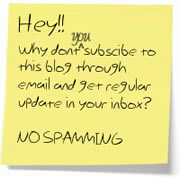I host my own mail server (Courier with Spamassassin) and check my mail via IMAP on my iPhone. Unfortunately Apple never implemented use of the IDLE command to enable Push with an IMAP account (there is a jailbroken app that will do this!), so the alternative (if one is desperate for Push) is to pipe their email to a service that is supported (Yahoo, and now apparently Gmail), or set up Microsoft Exchange. Me, being me, I decided to try something new, and set about setting up Exchange. The first step, of course, is installing Windows Server (I decided to do a fresh install of 2008 Datacenter Edition), setting up a domain controller/forest/domain, and then Exchange, which I actually installed on another machine that runs Windows Server 2003 R2. The only issue is that Microsoft has not release a supported version of Exchange Server 2007 for 32-bit x86 machines! The only option is their 64-bit build, and as I don’t have any 64-bit server machines (my servers are a tad old) I had to make do with Exchange 2003 with Service Pack 2 (SP2 includes the additional functionality to enable Push, specifically ActiveSync).
After it all appeared to be installed and happy, my iPhone would not beep, no matter how many emails I sent myself. As it turns out, the entire time (of course) it was connected to my WiFi network. As soon as I disabled WiFi on the device, and it connected to my server via the 3G network, I noticed the “IP-AUTD Initialized” message in the server’s event log. Hurrah!
The reason? Have a look at point #2 in: iPhone 2.0 software: Troubleshooting iPhone or iPod touch Exchange ActiveSync “Push” issues (thank you very much to Tonicwater, see below). Perhaps the iPhone could check for a network environment change (i.e. logging on a WiFi network) and flush the DNS cache – at least for mail/corporate-related activities, such as the address of one’s registered Exchange servers. Then they would always be current, and the ‘push’ process could be re-initiated with the same server at its newfound address.
The final step was to forward mail from my Linux mail server to Exchange. This was accomplished by adding the following code to the end of Courier’s maildroprc file:
if ($LOGNAME eq "(my Courier email address)" || $USER eq "balint")
{
cc "!(my Exchange email address)"
}
I also added an Exchange recipient policy so that it would only keep the last 30 days of messages, which doubles as a backup of sorts.
Here is a useful page to help with diagnosing problems with Push in Exchange: http://msexchangeteam.com/archive/2006/04/03/424028.aspx
If you liked my post, feel free to subscribe to my rss feeds


























 BlogoSquare
BlogoSquare
One Comment